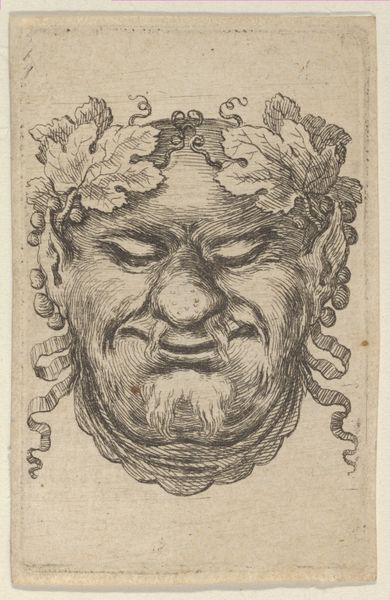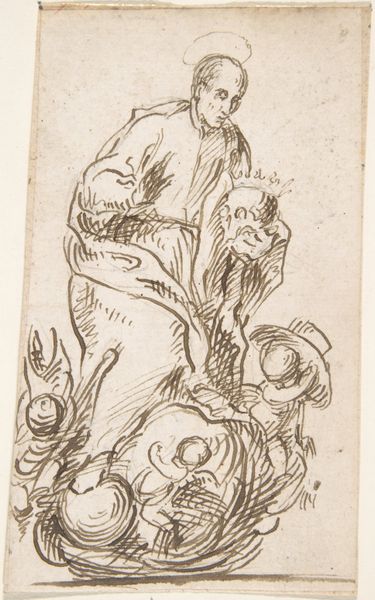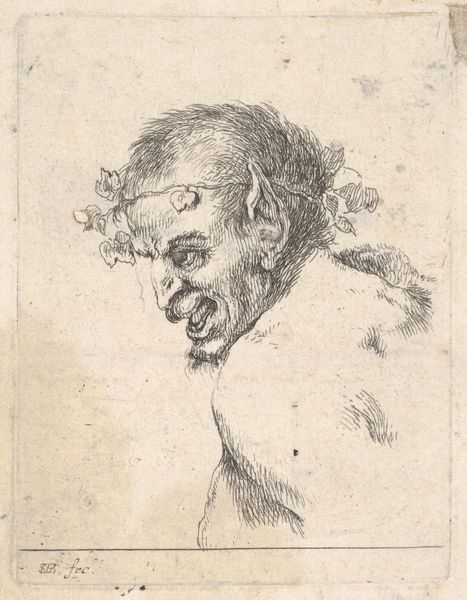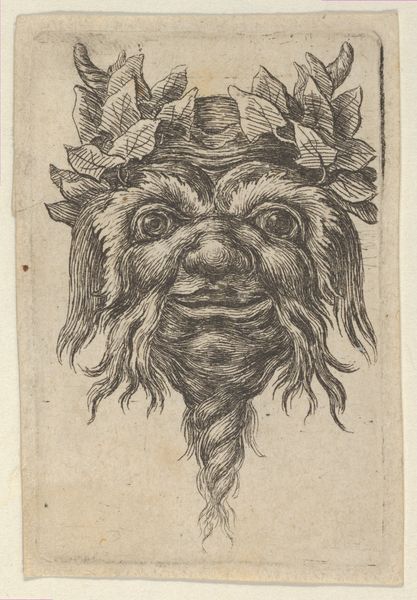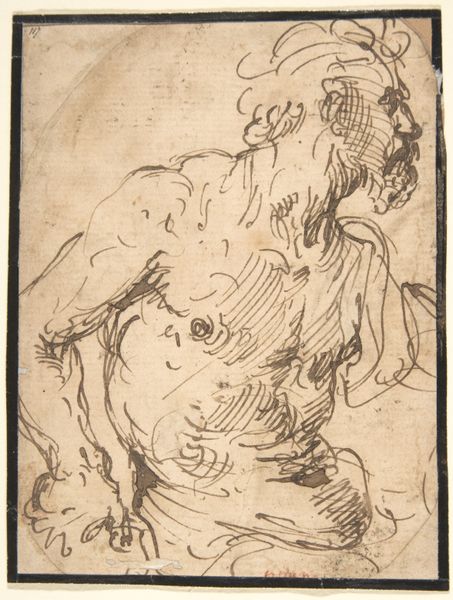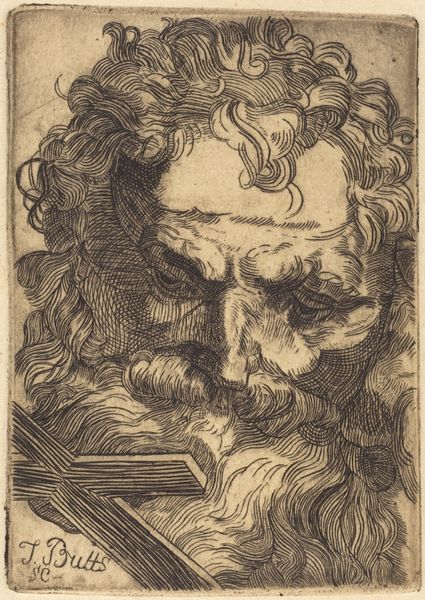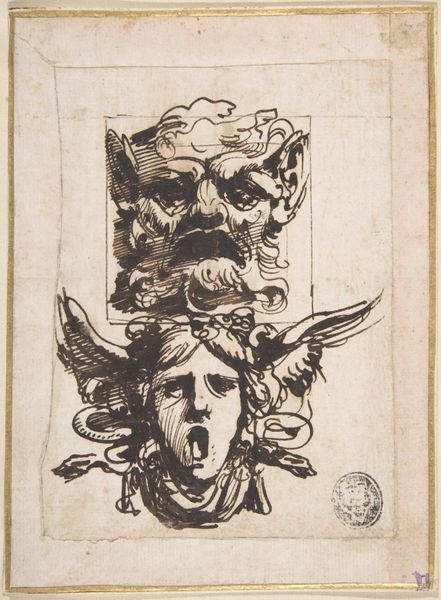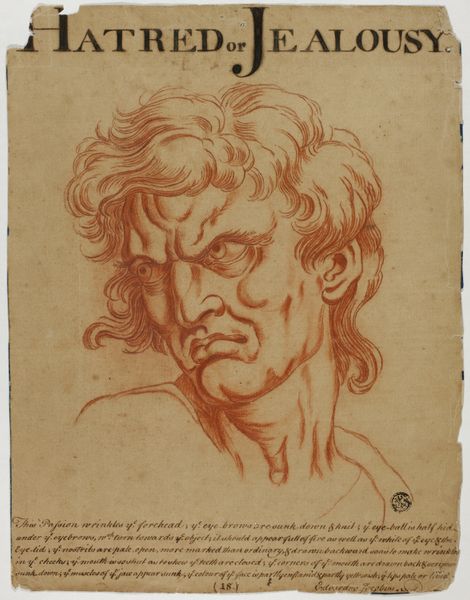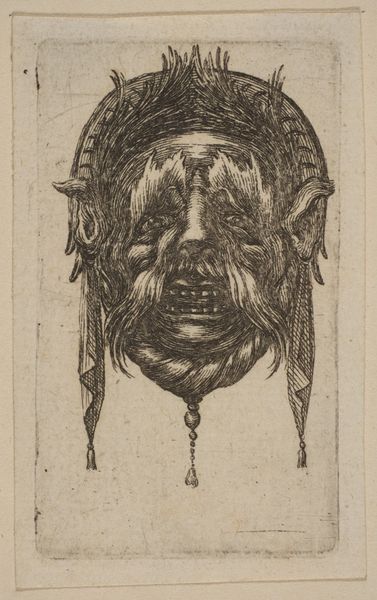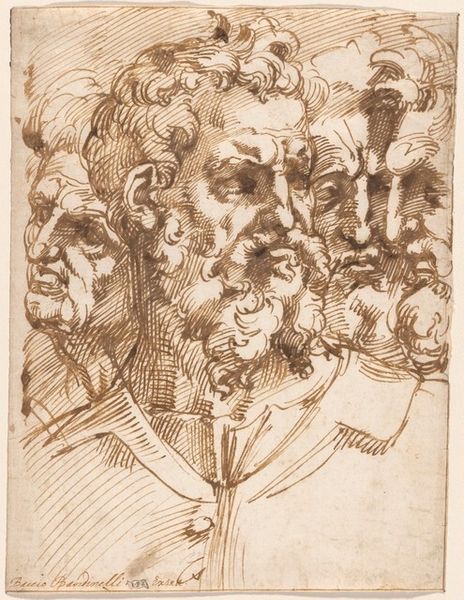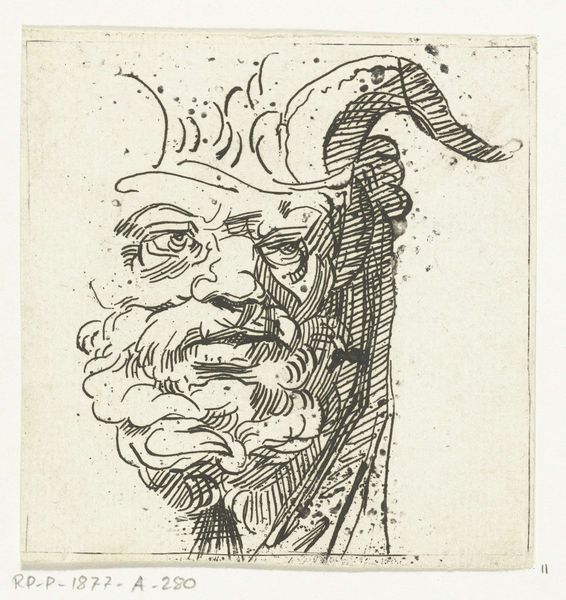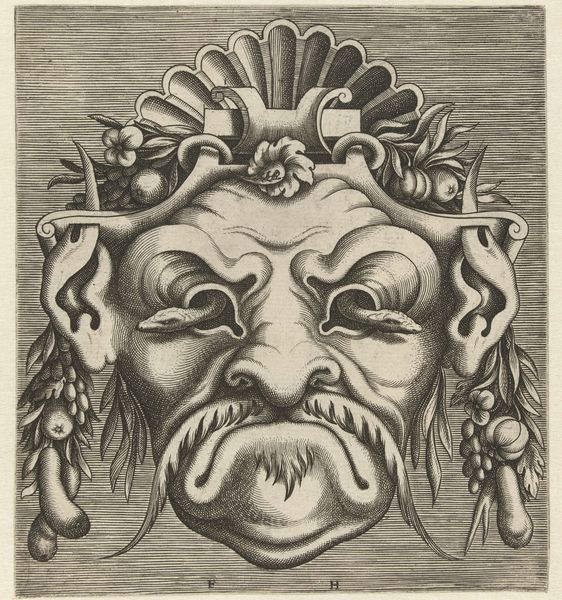
drawing, print, intaglio, ink
#
portrait
#
drawing
#
ink painting
# print
#
intaglio
#
mannerism
#
figuration
#
ink
#
watercolor
Dimensions: 10 15/16 x 8 1/4 in. (27.8 x 21 cm)
Copyright: Public Domain
Curator: Look at the ferocity! It's a bit unsettling at first glance, wouldn't you say? Editor: It is, but a controlled unsettling. The tension in the face is almost theatrical. This intaglio print, "Satyr's Head" by Adamo Scultori, thought to be made between 1566 and 1580, showcases Scultori's incredible control over the line. The etching breathes Mannerist drama, and it's part of the collection at The Metropolitan Museum of Art. Curator: The figure's expression and goat-like features feel as if the veil has lifted to reveal something elemental. There's that ancient, pre-Christian symbolism, but filtered through a very deliberate Renaissance lens. Editor: Exactly. See how the line weight varies, creating volume and depth in an almost sculptural way. The controlled chaos of the hair, the shading around the eyes—it all contributes to this sense of contained power. It almost feels as if the subject might erupt from the page. Curator: It does invoke raw instinct. The satyr is a liminal figure, caught between man and beast, symbolizing the wilder aspects of human nature. That leering grin – does it threaten or taunt? The satyr exists outside of social order, allowing viewers a forbidden glance into the primordial id. Editor: Absolutely. The rendering style enhances this uncivilized sense. There’s a freedom to the handling of line and form. It makes one feel like the satyr's emotions—the uninhibited passion—might suddenly burst forth from within the constraints of representation. Look closely, for instance, at how lightly sketched and incomplete the horns are. Is the incomplete the suggestion here? Curator: Perhaps it represents our ever imperfect attempt to portray and control forces like instinct. He offers insight into what Jung calls "the shadow," or the hidden parts of self. Editor: What really holds my attention is the intricate etching. The texture Scultori manages to coax from ink on paper transcends mere depiction, pushing toward actual sensation. Curator: To understand the art, and our reactions to it, is to explore something central about the human condition itself. Editor: Yes, the work embodies so much about the period while engaging the primal fears that persist today. Thank you for speaking with me.
Comments
No comments
Be the first to comment and join the conversation on the ultimate creative platform.
